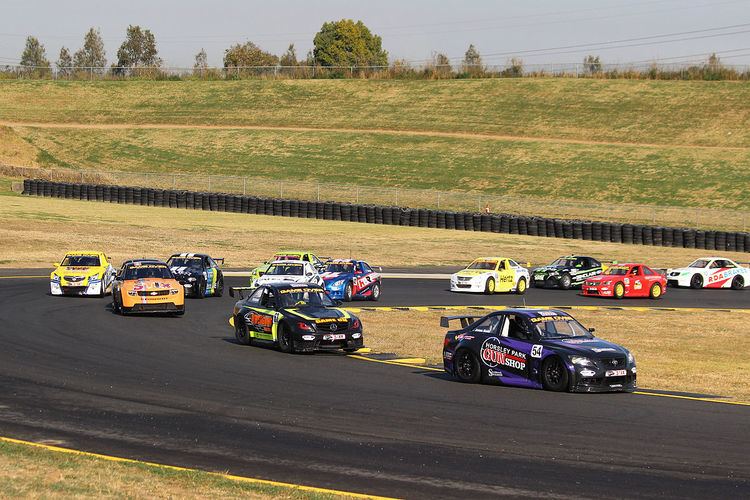Category Silhouette racing car Inaugural season 2001 Drivers' champion James Duckworth | Country Australia Engine suppliers Yamaha FJ1300 | |
 | ||
Teams' champion RDA Brakes/Rinkin Racing | ||
Aussie Racing Cars is an Australian motor racing category. Essentially a motorcycle powered Silhouette racing car class, it was created by former touring car racer Phil Ward, influenced by the American Legends category. Ward sold the category in 2012 to Keltic Motorsport, a motorsport company owned by Queensland based father-son team of Tony and Klark Quinn with Bathurst 1000 winner Jason Bargwanna acting as commercial director.
Contents
- The cars
- Engine
- Cooling
- Gearbox
- Dash
- Chassis
- Suspension
- Brakes
- Wheels and tyres
- Body styles
- Dimensions
- Speed
- References
The category contests an annual Aussie Racing Car Series which is approved by the Confederation of Australian Motor Sport as a National Series. In 2009 the series made the transition from running at V8 Supercar events to run on the Shannons Nationals Motor Racing Championships program. The series has since reverted to having most of the rounds alongside V8 Supercar events.
The most successful drivers in the category are Paul Kemal who has won the series title three times, Mike Russell twice, while Phil Ward's two sons James and Brad have also won titles.
The Hampton Downs round of the 2016 season hosted the inaugural Trans-Tasman Woman's Challenge. Charlotte Poynting was chosen to represent Team Australian up against Alyssa Clapperton representing Team New Zealand. In Race 3 Poynting who started 9th on the grid, raced through the field to win by 2.5 seconds, becoming the first ever Female to win a race in the Aussie Racing Cars category.
Currently in 2016 Harley Haber is the youngest driver in the category, just 16 years of age.
The cars
The Aussie Racing Car combines current racing technology and performance in a one-design class where all cars are mechanically identical with strict rules in place to maintain that position. Various body styles are permitted. Originally only 1940 Ford Coupé and Holden FJ body styles were available, with Ford AU Falcon and Holden VY Commodore styles which replicate V8 Supercars later made available. A Toyota Aurion body shape was launched in 2008, followed by a Holden Cruze in 2012 and a Merecedes-Benz inspired "Euro GT" in 2013. Nissan Altima, Ford Mustang, and Chevrolet Camaro were added in 2014. Hyundai Elantra debuted during the 2015 series.
Cars are constructed on a purpose built steel tubular space frame chassis with integral roll cage construction designed and approved to stringent engineering specifications. The lightweight composite body is a faithfully designed caricature of its full size counterpart featuring opening doors, boot and lift off front section. Powered by a 1.3 litre 125 bhp (93 kW) twin cam 16 valve engine sourced second-hand from used Yamaha FJ1300 motorcycles that revs to 11500 rpm. The 515 kg all up weight provides a high power-to-weight ratio that allows the car to reach speeds in excess of 200 km/h. Lap times achieved at Oran Park Raceway are within six seconds of a V8 Supercar. They feature fully adjustable suspension geometry, huge brakes and controlled competition tyres that produce high grip levels. All cars are hand built in the Aussie Racing Car facility and supplied ready to race.
The cockpit layout is purpose built and fitted with a five point racing harness. The steering requires only one turn lock to lock and minimal steering movement during racing. The sequential gear lever is close to the steering wheel and the carbon fibre dash displays the necessary instrumentation. The chassis design incorporates simplicity in suspension adjustment to cater for all drivers likings including castor/camber, sway bar, roll centre and ride height etc. Brakes have simple front to rear bias adjustment.
The class has proven attractive to karting racers without the budget to progress to Formula Ford. Aussie Racing Cars is by far the most cost effective 1st tier category in Australia and New Zealand with options to lease a chassis for $15k or buy a new car outright for $59k. This makes for a great competitive category that attracts lots of exposure, a great stepping stone for any racer looking to make a career out of motorsport.
